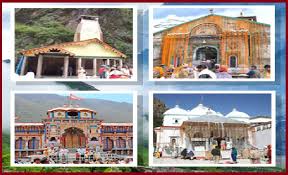Ancient Indian Vedic Civilization denies Aryan Invasion

– Dr Chandra Prakash Trivedi
India has a long ancient history of Vedic civilization independent from the world as such the world came to know about India and Indian culture only after the raid of Alexander the Great in 326 B.C. Once it was a global culture and restricted to the Indian subcontinent after the Ice age on the earth before 18000 years ago as reported by the Hamburg Institute of Meteorology of Max Planck Society Germany on the project ‘Climap’ German News Sept. 89 Page 25.
Vedic culture has flourished on the earth 18000 years ago before the ice age. The scientific principles incorporated in Veda were rediscovered at Indus Valley and Grand Canyon 11 thousand years ago.
Another major event was the discovery of the ancient cities of Harappa and Mohenjo-Daro in the 1820s. with this, the great history of Indian culture came into light and became the most important for the Archaeologist, Historians, Linguistics, and Anthropologist to work on the Indian culture, Veda and Sanskrit.
The discovery of the wonder of the world underground cave city Grand Canyon N.A. Indus Valley and ‘Temple complex’ from one rock Kailash, Ellora India explores Vedic Civilization survived for over 11000 years as India’s antiquity. Veda is the first Word of the civilized person on the Earth “What can be more tedious than the Veda, and yet what can be more interesting, if once we know that it is the first word spoken by the Aryan man?” These are words of F. Max Muller, who has the credit to introduce Vedas in the world.
All have been included in the world heritage list by UNESCO.
The Decipherment of Indus Valley seals explores Vedic Sanskrit Lexicography as an intellectual language. As also it explores the antiquity of India’s Vedic culture as part of the life of Indians. After natural catastrophes, global warming, and ice age, the people moved towards villages to maintain harmony with nature. India’s village culture and the Europeans could not decode the Vedic language code and the height of the Vedic development. To worship the plants was superstition for them, although to worship plants is the most scientific as the plants are a source of life with photosynthesis on the earth.
Decipherment of Indus Valley seals
The decipherment of Indus Valley explores that the Indus Valley was the most advanced civilization. The seals and tablets excavated at Indus Valley were prepared for demonstration and teaching, to teach the Origin and evolution of creation and life, with its text in Vedas.. Biotechnology was their main business After the discovery of DNA they moved to Grand Canyon to search for Vital Life consciousness in the deep sea as indicated in Veda.
The inscription on the seals has very few symbols, which expresses that cell divides from chromosome to chromosome.
The symbols on the seals is not a script of any language, the symbols are microscopic cytological models of DNA and chromosome to demonstrate stages of cell division, where Chromosome divides from chromosome to chromosome.
Life has evolved from single DNA with genetic recombination and cell division. The Unicorn expresses the same.
The key to deciphering the Indus valley seals is in the Vedic metaphors and Vedic Science. The Vedic metaphoric knowledge of creation and Biology has been engraved on the seals.
It is a known fact that India and Africa have the largest biodiversity zones in the world, it reflects their knowledge of biotechnology and the development of new species.
Ŗgveda the oldest literary record of human civilization on the earth has no description of the temple or iconic worship. The Indus Valley has no trace of the temple or idol worship and their religious beliefs. It suggests that Vedas in original are not only religious scriptures.
The excavation of the fire altar at some places is an indication of their knowledge of sacrifice-yaj¤a. It is common to sign of Indus-Vedic culture testimony.
A well-developed, city organization, the existence of a dockyard and dam, indicates their foreign connections for trade. Indus
Vedic culture was having trade contacts with summer, Egypt, Mesopotamia, and Babylon.
In excavation at Indus Valley, the Archaeologists have discovered a large number of crop varieties and the croplands with irrigation facilities and water supply through the canal system. A large number of water reservoirs and wells with a big dam reveal the fact that the civilization was a scientifically developed society having no place for God and Soul, as we believe today. With the scientific developments, they reach the peak of the development, and the ecological disaster, global warming, and flooding with time was the main cause of the destruction of the Indus Valley- Vedic culture. The excess irrigation and deforestation may be the cause of the ecological disaster and the formation of the desert. They were having the knowledge of global warming and its impact hence before the catastrophe they have evacuated the areas nearby the seashore and rescued themselves. Due to this after flooding and release of the dam water, the whole area was under the sea mud, which has its emergence afterward on the earth with the geological disturbances with which we are in contact at present. Due to this in the highly populated areas the human skeletons have not been excavated in large quantities and those, who have not escaped, might have been the victims of the sea currents. Accordingly the traces of laboratories, machines have could not be found.
They have reached the peak of development scientifically. They may have exploited nature through cross-breeding, Hybridization, and the development of new species for domestic purposes. Their achievement in this field and consequent development of Biotechnology has been reflected on the seals through the pictographs.
They have compiled their knowledge in the Vedic hymns after going far away from the affected regions. They have emphasized harmony with nature and the natural components. The Puru–a sÊkta is the latest with a supreme knowledge of the creation in sixteen verses. The compilation of the Vedic hymns is after reaching at the peak of the development and after the ecological disaster, it can be confirmed from the Asya vÈmÏya SÊkta- The hymn of the supreme. The scientific knowledge compiled in the Vedic hymns reflects that the Vedic Science is vis-à-vis modern science, along with it; the Atharvaveda has a hymn on global warming. It is the testimony that they were acquainted with global warming and its impact. Accordingly, they have developed harmony with nature and traced the origin of life and its scientific reason behind it on the earth. This knowledge has been acquired in the post-Indus valley Vedic culture era.
The Indus Valley- Vedic culture was scientifically developed in various fields along with gene Technology. We can trace the facts from the pictographic seals. A look at the seals with deep insight reveals the fact that the engraved small pictographs associated with the animal or human figure are complimentary with each other. They are the symbolic expressions for which the seals were prepared. The pictograph, which has been engraved on the seals is basically the same for all people. It is also a fact that such a development is not possible without the scientific and ecological knowledge and the principles working in the creation. The Vedic scientific principles synonym to our modern knowledge can justify the development and the compilation of the Vedic hymns was for the future generation to come on the earth.
Let us with tuneful skill proclaim these generations of the Gods, that one may see them when these hymns are chanted in a future age.ÿg.10-72 1.
Caste system
The caste system is indigenous to India, which is based on hereditary principles. The unity in diversity has flourished in the Indian subcontinent under the caste system, they observed cultural integrity. To project diversity, the British Emperor of India has used monotheism and polytheism to divide the Indians in the name of Religion.
The Indus Valley Civilization- Lamberg, Karlovsky, who drew attention to the astounding degree of cultural homogeneity in the vast area of the Indus Valley Civilization, juxtaposed with the lack of any evidence for a centralized political structure. Not only is there uniformity of culture, but the physical layout of the community is replicated irrespective of whether it is the 5-acre site of Allahdino or the 150-acre site of Mohenjo-Daro. Lamberg-Karlovsky believes this ‘enigma’ can be adequately explained by supposing that only an exceptional social organization such as the caste system can account for this. He finds a variety of archaeological evidence to support this. The residential units at Indus sites, for example, were much larger than other contemporaneous sites, suggesting a stronger sense of kin identities or groupings. He notes that competition in a class-structured society results in a much wider variety of styles and methods of production, wherein in a caste system, much more uniformity is to be expected, as is evidenced by the artifacts unearthed in the Indus Valley sites. Caste organization would also explain the social stability of such a massive culture in the absence of a centralized state or chieftainship. Finally, the concern with purity in a caste system is simply evidenced in the Archaeological record by the un-parallel attention and concern given to the control of and access to water and sanitation; at Mohenjo-Daro, there is an average of one well for every three houses.
If we consider the hypothesis of Lamberg-Karlovsky that the Caste system is indigenous to India, which is based on hereditary characters, its principles can be seen in Indus Valley gene technology.
Global warming
Global warming is a modern threat to the existence of life on the earth, it seems that the earth may have faced this situation earlier too as indicated in the Atharvaveda in a lucid manner Ath.10-8
vFkZoosn 10-8-39As between heaven-and earth, Agni went, burning on, all-consuming, where stood beyond they of one husband – where perchance was patrician then?
vFkZoosn 10-8-40 Matarisvan was entered into the waters; the gods were entered into the seas; great stood the traverser of space; the purifying one entered into the green ones.
The Vedic seers have drawn the picture of global warming. It has been indicated that during the period when in between earth and heaven fire go on burning and consuming all. It means due to global warming, the earth and heaven will have no difference. Looking to this a question has been asked? If such a condition will be there, in that condition where will be the lord of heaven and earth (fundamental energy)? Where will be the Matarisvan (CO2)? It has been indicated here that the lord of heaven and earth (fundamental energy) will be in the mid of space and Matarisvan will enter into the water. It means it will be in the dissolved condition, the natural forces will remain in the ocean of the sky. The purifying one will enter into the green one. It suggests that the air purifier (chlorophyll) will be in a dormant condition. As we know that during unfavorable conditions the prokaryotes can form the cyst, they reproduce with the return of favorable conditions. As such after the catastrophe, the process of evolution will again start similarly as before, with the power of Gayatri-fundamental particles (electron, proton, and neutron). The Gayatri has been described as immortal -Amrit. The seer who has the knowledge about the synthesis of the substances can explain the unseen fundamental bond energy, which binds the atoms.
vFkZoosn 10-8-41
Higher, as it were than the Gayatri, upon the immortal (amrita) he strode out; they who knows completely chant with chant-where then was seen the unborn one (aja).
Age of the Veda
As per the Hamburg Institute of Meteorology of Max Planck Society, Germany under a project on Climap has reported that identical to today’s ‘Greenhouse Effect’ and consequent Global warming had occurred about 18000 years ago and a consequent ice age was there and North America, Europe, and Siberia were covered with thick snow cover in between Siberia and Alaska a Landbridge was formed through which people were migrated. (German News Sept. 89, Page 25).
Vedic culture has flourished on the earth 18000 years ago before the ice age. The scientific principles incorporated in Veda were rediscovered at Indus Valley and Grand Canyon 11 thousand years ago. The world came to know about India after the raid of Alexander the Great in 326 BC
Another major event was the discovery of the ancient cities of Harappa and Mohenjo-Daro in the 1820s the great history of Indian culture came to light and became the most important for archaeologists, Historians, Linguistics, and Anthropologist to work on the Indian culture, Veda and Sanskrit.
Result and Conclusion
Indus Valley Vedic Civilization
The Decipherment of Indus Valley seals explores Vedic Sanskrit Lexicography as an intellectual language. As also it explores the antiquity of India’s Vedic culture as part of the life of Indians. After natural catastrophes, global warming, and the ice age, the people moved towards villages to maintain harmony with nature. India’s village culture and the Europeans could not decode the Vedic language code and the height of the Vedic development. To worship the plants was superstition for them, although to worship plants is the most scientific as the plants are a source of life with photosynthesis on the earth. It was the main reason behind their ‘Aryan’ invasion hypothesis without basis. Aryan’ means well-civilized person. It has nothing to do with religion, caste, color, race, or creed. North India is near to the mountains cold and south is near to the seashore warm, it is the cause of the color difference between the north and south Indians. The Rev. Robert Caldwell 1814 used the term Dravidian for People of south India. India has many languages but Sanskrit ia common in all rituals and traditions all over India. In the South they follow ‘Krishna Yajurveda’ and the North Indians follow ‘Sgukala Yajurveda’ both are Vedic branches.
Hence Aryan invasion was a conspiracy to deny the antiquity of India. It is the Vedic Scientific Heritage of Mankind on the earth, which emphasizes the whole earth one family like a global nest, a village. Biotechnology was the main business of Indus Valley as reflected on the copper tablets. The rich biodiversity of the Indian subcontinent is proof of the original inhabitants of the Indian subcontinent.








 Demo Description
Demo Description